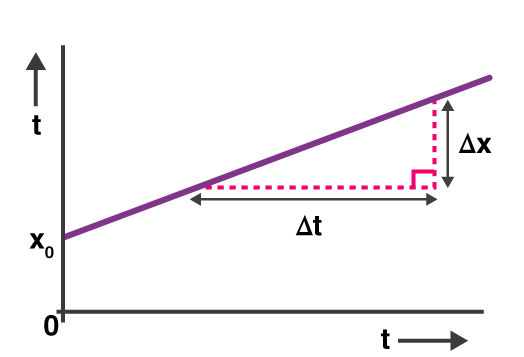Unit of Velocity - Definition, FAQs

What is the SI unit of velocity or Define velocity and its SI unit.
The concept of velocity and speed can help us identify the moving objects in a given area. For instance, if two objects are moving in the same direction, it can be easily done to tell the fastest moving object. However, if the two are in the opposite direction, it can be hard to determine the fastest moving object.
Definition of velocity units physics and SI unit of velocity and acceleration:
Velocity is the rate at which the position changes. The average velocity is the displacement or position change (a vector quantity) per time ratio. The SI unit of velocity is metre per second (ms-1). When the amount or direction of a body's velocity changes, the body is said to be accelerating. The velocity is measured in metre per second whereas knot is the unit of one nautical mile per hour.
Also read -
- NCERT Solutions for Class 11 Physics
- NCERT Solutions for Class 12 Physics
- NCERT Solutions for All Subjects
Constant velocity
The simplest form of motion is that which has a constant velocity. When an object slides over a horizontal, low friction surface, we see continual motion (when a puck slides over a hockey rink.)

(Source self made using paint)
A graph of displacement versus time for a body travelling at a constant velocity is shown above. The graph's straight line can be expressed algebraically as follows:
x = x0+vt In the equation, x0 represents the displacement at time t0 , and v represents the body's constant velocity, v=dx/dt.
| Related Topics Link, |
SI unit of velocity in physics and velocity unit of measurement:
m/s (ms-1) is the SI unit of velocity.
Other velocity units and dimensions are shown in the table below.
| Common symbols | v, v, v⃗ |
| SI unit | m/s |
| Other units | mph, ft/s |
| Dimension | LT−1 |
(Source self made using tables):
SI system:
Quantity | Quantity symbol | CGS unit of velocity |
velocity | v | metre per second |
| acceleration | a | m/s2 |
| force | F | newton |
CGS system:
Quantity | Quantity symbol | CGS unit name |
velocity | v | centimetre per second |
acceleration | a | gal |
force | F | dyne |
Also Read:
- NCERT solutions for Class 11 Physics Chapter 3 Motion in a straight line
- NCERT Exemplar Class 11 Physics Solutions Chapter 3 Motion in a straight line
- NCERT notes Class 11 Physics Chapter 3 Motion in a straight line
Unit of speed and velocity
For most of us, the concepts of unit of speed and velocity are a little perplexing. The distinction between unit of speed and velocity is that speed informs us how rapidly an object is going, but velocity tells us not only how fast an object is moving but also in which direction it is travelling. Velocity is a function of displacement, whereas speed is a function of distance travelled. The velocity of a body at any particular time is known as instantaneous velocity.
The average velocity is calculated by multiplying the total displacement by the entire time, v = xt, where x is the total displacement of the body and t is the time. Average speed is always less than or equal to average velocity; This is due to the fact that displacement can never exceed the distance travelled, yet the distance travelled can exceed displacement.
Difference between unit of speed and velocity
Speed | Velocity |
| Speed is the measure of how fastly an object is moving. | the direction of the movement of an object. |
| It is a scalar quantity | It is a vector quantity |
| rate of change of distance | Rate of change of displacement |
| Speed of an object moving is never negative | velocity of a moving object can be zero, positive or negative. |
| indicator of the rapidity of the object. | indicator of the position as well as the rapidity of the object. |
| It can be defined as the distance covered by an object in unit time. | Velocity can be defined as the displacement of the object in unit time. |
Also check-
- NCERT Exemplar Class 11th Physics Solutions
- NCERT Exemplar Class 12th Physics Solutions
- NCERT Exemplar Solutions for All Subjects
NCERT Physics Notes:
Frequently Asked Questions (FAQs)
m/s (ms-1) is the SI unit of velocity.
cm/s (cms-1) is the cgs unit of velocity.
The units for measuring speed and velocity are the same. The metre is the SI unit for measuring distance and displacement. The second is the SI unit of time. The metre per second – the SI unit of speed and velocity
Speed | Velocity |
Speed is the measure of how fastly an object is moving. | the direction of the movement of an object. |
It is a scalar quantity | It is a vector quantity |
rate of change of distance | Rate of change of displacement |
Speed of an object moving is never negative | velocity of a moving object can be zero, positive or negative. |
indicator of the rapidity of the object. | indicator of the position as well as the rapidity of the object. |
It can be defined as the distance covered by an object in unit time. | Velocity can be defined as the displacement of the object in unit time. |